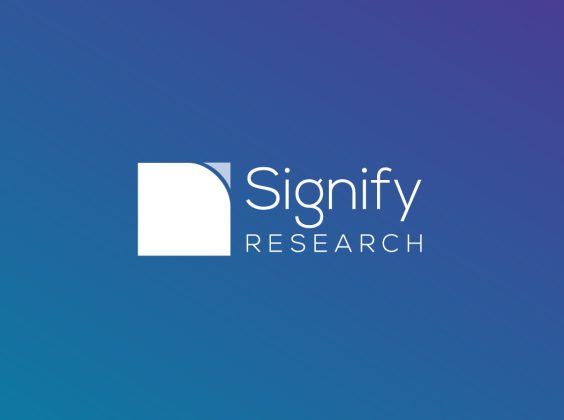
Written by

Many companies have developed AI algorithms to detect lung nodules from CT or X-ray images. But few have dedicated their efforts to creating a solution that addresses multiple aspects of the lung cancer screening pathway. For this reason, AI has yet to play a strong role within lung screening.
Optellum, is one such vendor that has looked to defy these norms. It has developed an AI solution that detects and quantifies nodules, and even classifies the likelihood of malignancy. Further, it has recently received reimbursement in the US, overcoming one of the most significant barriers to the medical imaging AI market.
Contextflow partners Reveal DX
Few vendors have lung AI solutions that can compete with Optellum’s at present. However, a recently announced partnership between contextflow and Reveal DX attempts to challenge Optellum’s recent successes. The partnership combines contextflow’s SEARCH solution with Reveal DX’s quantification and classification capabilities to create a more comprehensive solution for lung imaging.
contextflow’s SEARCH solution detects and triages 23 findings, including lung nodules. The solution compares the current findings to a large bank of evidence from similar studies and informs the clinician of the diagnostic pathway previously adopted. Reveal DX’s RevealAI-Lung quantifies lung nodules to compute a malignancy Similarity Index (mSI), supporting clinical decision-making and aiming to reduce unnecessary biopsies to deliver faster diagnoses.
Algorithms evolving to comprehensive solutions
This partnership brings together two smaller AI vendors (in terms of venture capital funding raised) but together hold ambitions to be the go-to provider for AI solutions for lung cancer screening. By partnering, each vendor has expanded its limited solution to create a more fully-fledged comprehensive solution that can compete with the likes of Optellum’s Virtual Nodule Clinic.
Each vendor now has access to a more comprehensive solution with fundamental capabilities it otherwise lacked. It also addresses one of the macro trends of the medical imaging AI market, which sees the evolution of AI algorithms, and enables both vendors to compete in a heavily crowded market space more aggressively.
contextflow’s SEARCH solution remains unique in the market today. No other vendor offers a similar value proposition. Further, a study published in the Journal of the American College of Radiology highlighted Reveal DX’s ability to help clinicians diagnose lung cancer sooner with improved specificity. By bringing these capabilities together, both vendors have created a comprehensive lung cancer solution for CT imaging that can, on paper, outcompete most of its competitors.
However, Optellum’s comprehensive solution for lung cancer has received reimbursement through a New Technology Ambulatory Payment (NTAP) in the US, providing clinicians with a greater incentive to adopt its solution. For now, at least, this means Optellum still holds the trump card. Further, both vendors have their work cut out to challenge some of the more established medical imaging AI vendors across other clinical segments, such as Aidoc, Viz.ai, and annalise.ai, for example.
Greater than the sum of its parts
The uptake of radiology AI is growing, and although the market remains nascent, radiologists are now more discerning when procuring AI solutions. There is now a greater emphasis placed on what value an AI solution can provide to the radiologist, a fundamental feature of solutions targeting this market.
With reimbursement for most AI solutions still elusive, a vendor must demonstrate a value greater than the sum of its parts to deliver an ROI that convinces radiologists to adopt its solution. Vendors that can demonstrate significant value beyond point algorithms will be more sought-after by radiologists.
By partnering, contextflow and Reveal DX are looking to provide radiologists with a solution that delivers more value than the constituent parts can individually. With this, both vendors can charge their customers more for the solution whilst fending off market competition. Further, this partnership also aims to convince radiologists that have already adopted an AI solution for lung cancer to pivot to the joint offering from contextflow/Reveal DX.
Growth of lung cancer screening programmes
More broadly, AI solutions that provide value to clinicians can support the growth and adoption of lung cancer screening programmes. These programmes are rare and inevitably increase workload, providing clinicians with little incentive to deliver them.
Given the severity of lung cancer, patients benefit from improved outcomes and a better quality of life if diagnosed earlier. Despite this evidence, screening programmes remain nascent. contextflow and Reveal DX’s partnership aims to deliver an AI solution that supports radiologists reading the increased volume of lung images and diagnosing lung cancer earlier.
Additionally, lung screening programmes will create more opportunities to sell additional solutions and services into these programmes, such as quality assurance or risk-based screening tools. Hence, these AI vendors are creating a market which presents further opportunities to up-sell other services.
Partnerships key to short-term growth
As the medical imaging AI market matures, it is becoming evident that no single vendor can do it all alone. For both contextflow and Reveal DX, the partnership presents an opportunity to establish a market-leading position as a lung cancer specialist vendor. Incumbents, such as Riverain Technologies, or new entrants, such as Optellum, both have advantages. However, partnerships are the key to short-term growth.
Both vendors are relatively small with limited resources. This partnership enables each vendor to offer a solution greater than the sum of its parts, remaining focused on their core offering whilst leveraging the opportunities this partnership presents, rather than attempting to develop other capabilities natively at the expense of commercial growth.
Ideally, a partnership may be a route for one vendor to acquire another. The acquisition would enable it to exert control across the product continuum rather than rely on its partner to deliver part of the solution, upgrades, and customer support. However, most AI vendors, even those which are part of part of Signify’s $100m Club (AI independent software vendors that have raised more than $100m in venture capital funding and remain privately funded), do not have the commercial traction or capital outlay to afford acquisitions. So, in the short term, partnerships are the most effective route to increase product value and scale quickly with less risk.
That isn’t to say there aren’t downsides, however. Each vendor is remains reliant on the other for updates and upgrades, which may compromise the customer experience if one isn’t as efficient as the other. Also, there may be a power struggle with both vendors vying for majority control. But on balance, the opportunities afforded far outweigh these challenges at present.
Minor impact that will ripple
The contextflow and Reveal DX partnership enables both vendors to compete in a very crowded market, which they would otherwise find more challenging. Partnering allows both to focus on their niche USPs whilst avoiding the risk of consolidation that other less well-funded vendors face. The partnership may still not be enough to out-muscle some of its competitors; however, the enhanced capabilities of the comprehensive solution that delivers more value to radiologists will increase its appeal.
The partnership will have a minor impact in the market today, but together contextflow and Reveal DX could drive the uptake and utilisation of AI for lung cancer screening programmes. In the medical imaging AI market, consolidation is unquestionably coming. Partnering is no silver bullet, and vendors have plenty on their “to do” lists in order to survive . However, for contextflow and Reveal DX, such collaboration could be instrumental in avoiding the chop.
